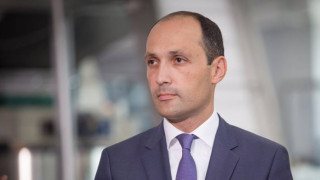Levan Davitashvili: “The GDP per capita (PPP) amounted to USD 10,000 in 2012 and has surpassed USD 23,000 today.”
Verdict: FactCheck concludes that Levan Davitashvili’s statement is HALF TRUE.
Georgia’s nominal GDP per capita in purchasing power parity (PPP) amounted to USD 10,000 in 2012 and had reached USD 24,700 by 2023, constituting a 2.5-fold increase. However, these figures are in nominal terms and includes the effects of inflation with the real growth being significantly lower. The real GDP per capita (PPP) increased by 1.68 times between 2012 and 2023, rising from USD 13,200 to USD 22,200 when adjusted for constant 2021 prices.
Thus, omitting inflation from analysis significantly distorts the reality. Whilst the GDP per capita increased by 145% in current prices (an incorrect approach used by the Minister), it grew by only 70% in constant prices (the accurate approach). The data cited by the Minister of Economy correspond to current prices, inaccurately reflecting the reality. Nominal indicators are not suitable for comparing data over time as they do not account for real changes. Thus, the Minister either mistakenly or deliberately used an incorrect approach for comparisons, exaggerating the actual growth.
Presenting statistical data without additional context gives the impression that GDP per capita growth was twice as high as the actual growth. Considering the above, FactCheck concludes that Levan Davitashvili’s statement is HALF TRUE.
Analysis
During his appearance on Rustavi 2’s show Ghamis Kurieri (News of the Night) Levan Davitashvili, the Minister of Economy and Sustainable Development, stated: “The GDP per capita (PPP) amounted to USD 10,000 in 2012 and has surpassed USD 23,000 today.”
Consumer prices vary across countries. For instance, USD 100 can purchase different baskets of goods and services in places like Pakistan, Georgia and Switzerland, making the PPP-adjusted GDP per capita a more accurate measure for comparing living standards across countries.
Georgia’s GDP per capita (PPP) amounted to USD 10,000 in 2012 and had reached USD 24,700 by 2023. However, it is inaccurate to claim that the real standard of living has increased 2.5-fold over the 11 years based solely on the aforementioned growth.
Comparisons across two periods should be made in constant prices rather than current prices as market economies are characterised by inflation.
The real GDP per capita (PPP) increased by 1.68 times between 2012 and 2023, rising from USD 13,200 to USD 22,200 when adjusted for constant 2021 prices.
Graph 1: GDP Per Capita in Constant and Current Prices
Source: World Bank
Whilst the left-side columns show a 70% increase in GDP per capita, the other columns indicate a 145% rise during the analysis period. Notably, the former represent the real picture.
In general terms, the longer the time period, the greater the difference between the nominal and the real GDP. Whilst the GDP in constant prices increased by 207% from 2003 to 2023, the nominal GDP expansion constituted 482% in the same period.
Omitting inflation from analysis significantly distorts the real picture. Despite a 6.3% contraction of the economy in 2020, the GDP per capita in current prices still experienced marginal growth. Although the total increase in the GDP from 2012 to 2023 amounted to 70%, the Minister of Economy’s discussion suggested a growth of 130%. Thus, FactCheck concludes that Levan Davitashvili’s statement is HALF TRUE.








